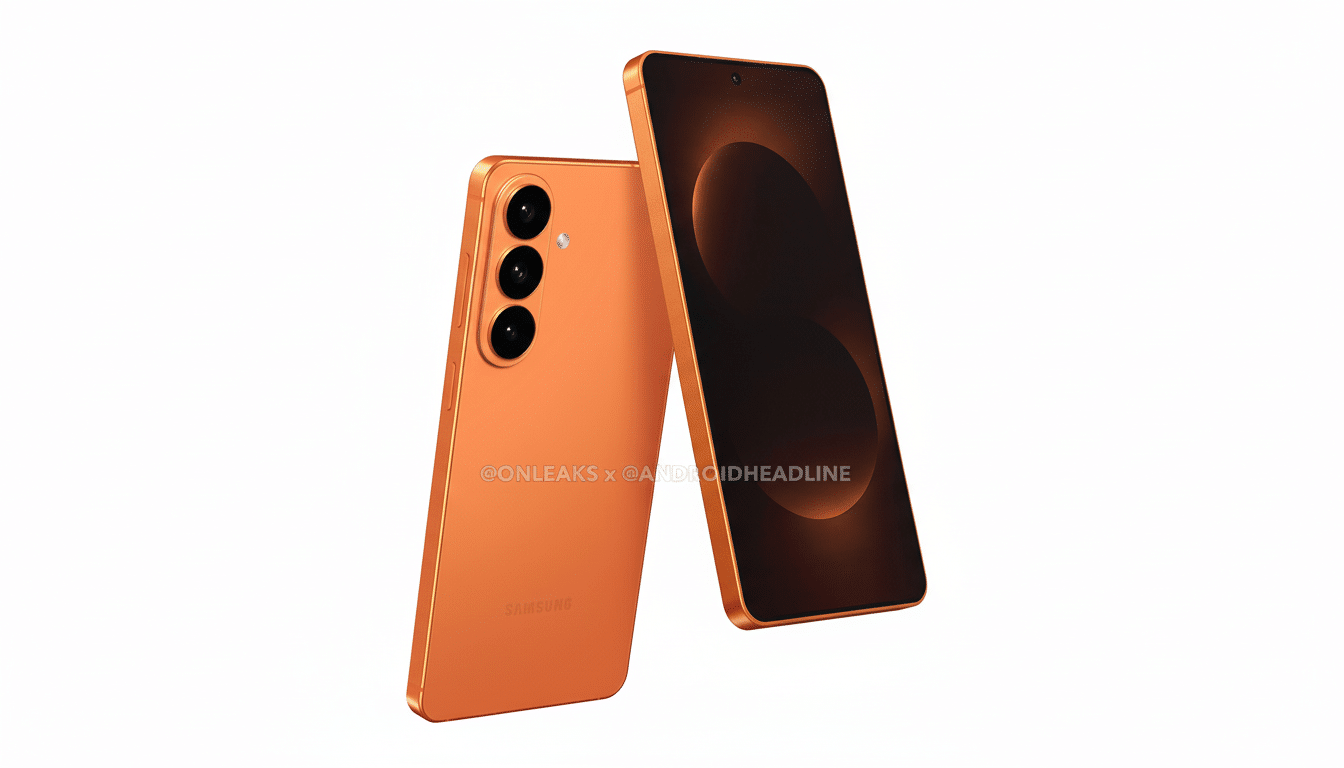A new leak suggests Galaxy S26 development suddenly changed after talks at Apple to keep the iPhone 17 range at a $799 starting price. Samsung was reportedly previously pushing for a thinner “slim premium” design, which would allow for a larger battery, but now it is focused on cost control in order to keep the base S26 at $799 — mirroring Apple’s price approach, according to South Korean outlet NewsPim.
Assuming [the report] is correct, the Apple paranoia is influencing not only Samsung’s pricing of the S26 family, but also its physical layout: dimensions, battery targets, and choice of chipset are being stretched to make sure that the entry-level model can remain competitive while leaving room at the top for a more premium Ultra.

What the leak claims about Galaxy S26 design and battery
NewsPim reports that the base Galaxy S26 has been aiming for a 6.9mm thickness, some 0.3mm thinner than its predecessor, with the addition of a new 4,900mAh battery. That plan is apparently off the cards: thickness will return to something more like current, and the battery goal is being reset to about 4,300mAh. (That’s still an improvement over the previous generation’s 4,000mAh — just not quite as big a jump as had seemed possible.)
The S26 Plus could carry over a 7.3mm thickness and 4,900mAh cell, while the S26 Ultra is said to keep a 5,000mAh capacity and slim down to an estimated 7.9mm. That sits alongside the rumored cutting of ‘Edge’ and a revival in Plus — not to mention three devices that sport much clearer target tiers, with the S26 being a low-price play, the S26 Plus reaching for middle ground, and the S26 Ultra, which is a feature alphabet soup.
Why Apple pricing at $799 matters for Galaxy S26 strategy
Apple has, for years, dominated the psychological $799 flagship slot, and market data make it clear why that number matters.
As per Counterpoint Research, the premium sector ($600+) is increasingly represented in smartphone shipments; it accounts for over 50% of worldwide revenue, and Apple clearly tops the chart. $799 is the anchor in consumer expectations and carrier deals (especially NA/EU).
That gateway has generally been met by Samsung on the S21 through the S24. But the calculus is also further complicated by inflation in components of the budget. Industry bill-of-materials estimates suggest higher costs for LTPO displays, advanced image sensors, and increased-size vapor chambers. Drawing a red line at $799 often involves compromises in thickness, materials, or reaching battery targets — the exact trade-offs now leaked on the S26.

Design trade-offs and battery targets for Galaxy S26 range
It’s a premium engineering challenge to go thinner while at the same time adding capacity. It usually requires stacked cells, a stronger midframe, additional small board-level layouts, and beefier thermal solutions — all adding cost. If the goal is to hit that $799 price point, then going back to a slightly thicker phone with a modest bump in battery is the practical way to keep margins intact without cutting anything of substance from the base experience.
Consumers may not feel shortchanged. A 4,300mAh cell in a smaller flagship with modern 4nm silicon and LTPO displays/smooth adaptive refresh should show significant improvement over last year’s base model. The bigger picture here is one of segmentation: relegating headlining battery or display tech to the Ultra helps Samsung defend a more costly overall pricing ceiling, while maintaining an attractive carrier-backed price for the base model.
Chip strategy and model differentiation across Galaxy S26
The report also refers to a split-silicon strategy. The Galaxy S26 and S26 Plus in places such as Korea and Europe are rumored to be powered by Samsung’s Exynos 2600, while the S26 Ultra stays with Qualcomm’s newest Snapdragon. This is reflective of recent cycles when Samsung has utilized Exynos outside certain markets and kept Snapdragon for Ultra everywhere, striking the right balance between supply flex and performance leadership.
Look for the Ultra to feature premium differentiators to justify what will probably be a higher price. One rumored enhancement is a privacy-oriented “Private Display” functionality that’s based on Flex Magic Pixel tech, which could make any content on screen more difficult to read from an angle — handy for travelers and those using it in the enterprise sector. Together with camera upgrades and AI features, those extras help Samsung put the Ultra between itself and that $799 base phone.
What to watch next for Samsung Galaxy S26 pricing and design
Three questions loom large. Firstly, can Samsung protect that headline $799 price while not shaving it to the bone in terms of battery and camera hardware or materials? Second, how far does the Ultra go if costs continue to soar? And third, is a higher-capacity thick base model enough for buyers to bite when Apple holds its own entry iPhone steady on price?
History indicates this tactic can succeed. Consistent pricing at retail mitigates friction, while clean tiering makes it easy for shoppers to self-select: value at the base, balance in the Plus, and no-compromise tech at the top. If the leak holds, Apple isn’t just a competitor to the Galaxy S26 — it’s the metronome setting Samsung’s beat on both design and price.

